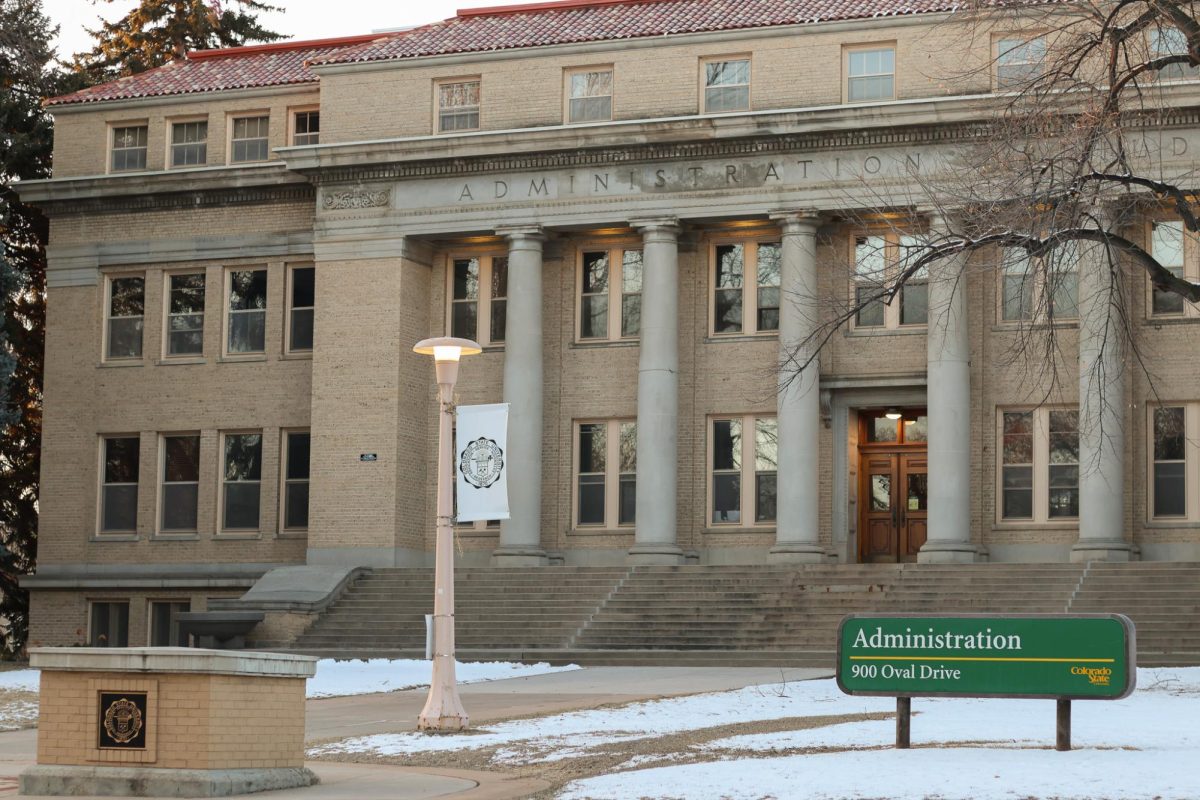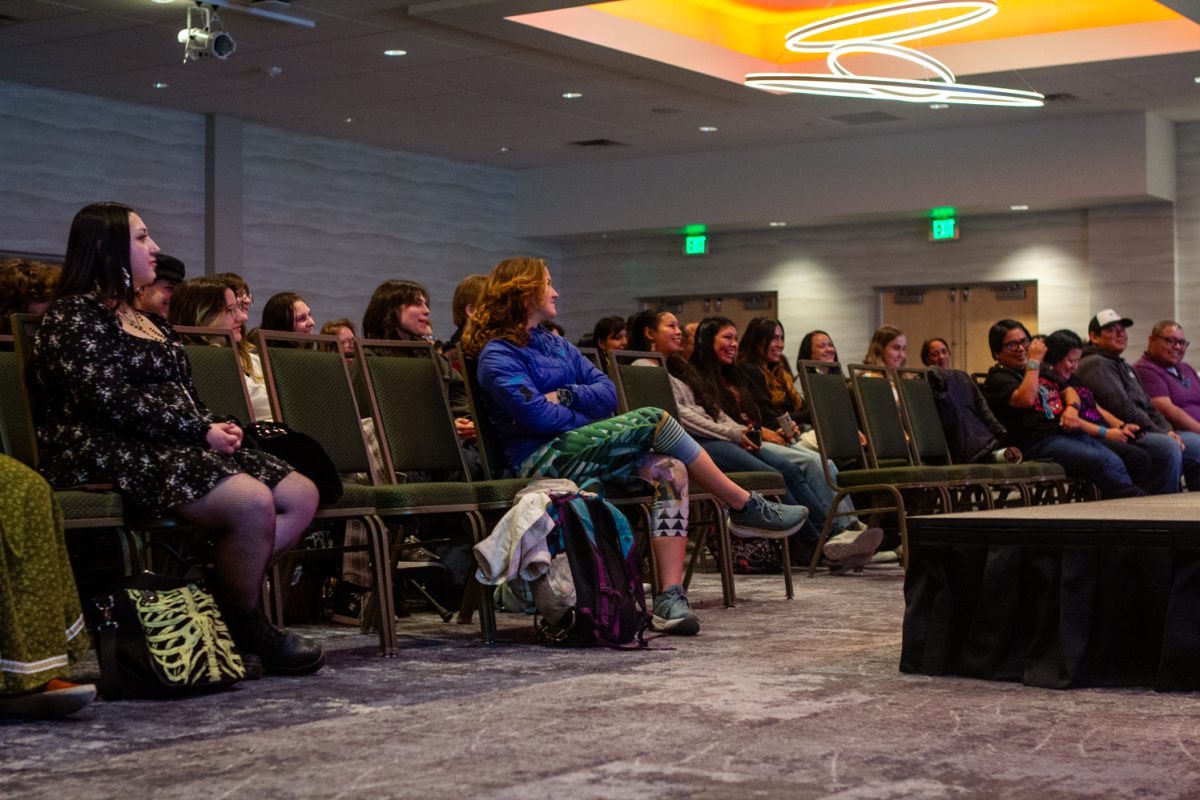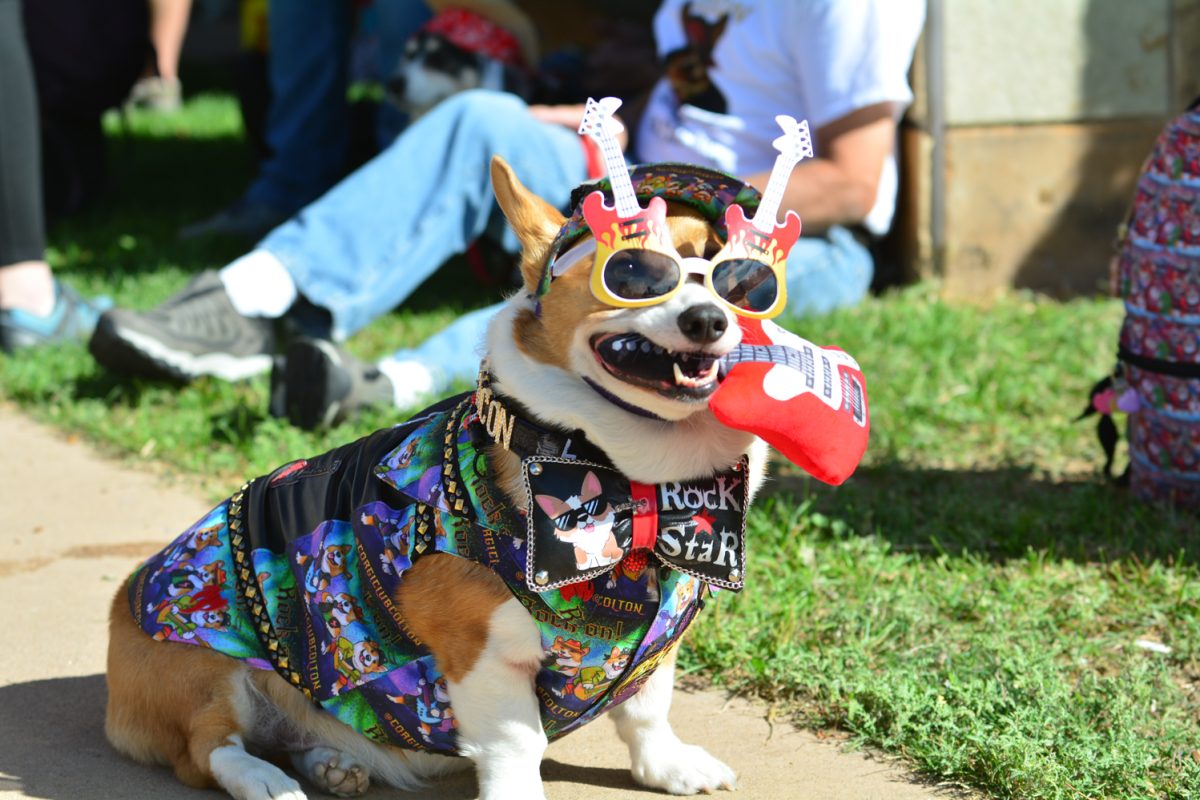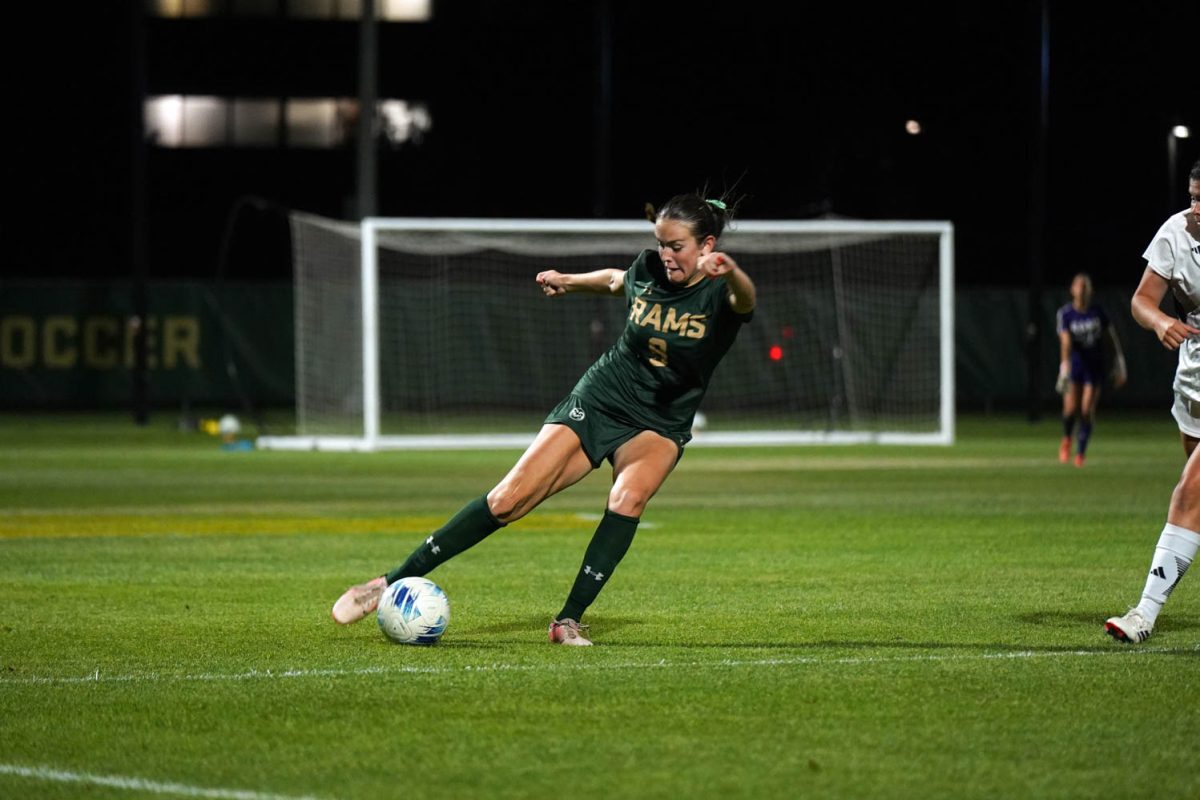

Parking permit prices have risen an average of 112.2 percent in the last four years, if including the prices for this fiscal year.
The trend follows the pattern of increasing expenses for Parking and Transportation Services. Expenses and permit prices have gone up 76.2 percent and 84.4 percent, respectively, not counting changes for FY 2018.
Prices of parking permits are dependent on the annual projected expenses and the number of permits sold, according to Brian Grube, associate director of finance and administration for PTS.
Projected expenses for the next year are divided by the number of permits sold in the current year, assuming the number of permits sold will remain the same, resulting in a per permit price which theoretically will cover PTS expenses.
This correlated relationship comes from PTS’ status as an auxiliary enterprise, defined by Colorado State University policy as “a self-supporting facility or activity,” which means the facility generates its own revenues to pay for its operations. PTS receives no state funds, tuition or student fees to offset costs.
“All of our money has to be earned through the sale of permits, hourly parking or citations,” Grube said.
Other auxiliaries on campus include Housing and Dining, the Lory Student Center and the CSU Health Network, according to Aaron Fodge, PTS alternative transportation manager.
“The people who park on campus, just like the person who is paying for the gym membership or the person deciding to pay rent in a resident hall—the user fee or permit is what goes to fund that system,” Fodge said.
PTS expenses include building and maintaining parking lots, construction, staffing and paying off the most recent round of transportation projects, according to Grube.
In FY16, the top three capital items were the South College Garage, the guidance system in the Lake Street Garage and reconstruction of the Westfall lot. In FY17, many smaller lots had work done, according to Grube.

Percent increase of yearly costs has been declining. FY 2014 saw a 33.5 percent expense increase from the previous year while FY 2017 saw only a 14.1 percent expense increase.
Permit prices have been increasing but with less consistency in how much they change.
Resident hall permits did not see a price increase in FY2016, but average student commuter permit prices rose 28.3 percent. For this academic year, average resident hall permit costs increased 31.5 percent from last year, while student commuter permits only went up three percent to cover inflation.
Although student commuter and resident hall permits each have a monthly, semester and annual option, the prices of all three are calculated to move at the same rate.
While student permit prices have seen a price rise parallel to expenses from increased construction, PTS being set up to break-even over the long term means price change has not always been predictable.
Although the Collegian was not able to obtain permit prices from before the FY 2014, a CSU Today article states that permit prices from FY 2010-FY 2012 were unchanged due to a salary freeze at CSU.
During this time, PTS expenses increased as they rebuilt the Morgan Library and Engineering Building parking lots, two of the largest lots on campus, according to Grube. Costs peaked during FY 2012 with total expenses higher than FY 2015.
Expenses then fell for FY 2013 because capital costs fell from lack of construction projects and leftover bond proceeds from the construction of Lake Street Garage, which were used to cover a large portion of the debt service payments, according to Grube.
However, Grube confirmed in an email to the Collegian that permit prices in FY 2012 were lower than FY 2015, and permit prices increased in FY 2013.
“Our department is set up to bring in more cash in a given year than goes out in expenses because we know that every few years, there will be a huge cash outflow to pay for a new parking lot or a reconstruction project,” Grube wrote.
Grube wrote prior to FY 2012, PTS saved enough cash reserves to fund new projects leading to net cash flow of about negative $2 million that year. The price increase in FY 2013 created more cash reserves because PTS projected the need to build more parking, demonstrating how revenue and expenses even out in the long-term.
On-campus Parking Availability

According to Grube, the availability of parking has no influence on permit prices.
After combining residence hall parking spaces, spaces for students who commute and multi-use spaces, spaces that any CSU permit can park in, about 200 student parking spaces in total were lost in the last four years.
The loss comes exclusively from student commuter parking, which is down 446 spaces from FY 2014. Parking for residence halls and multi-use spaces both increased.
The initial dip in commuter spaces was mainly due to stadium construction over student parking lots, Grube confirmed. The numbers rebounded a bit with the completion of the South College Garage and Research Boulevard parking lot.
According to PTS officials, many new campus buildings are built on top of what were previously parking lots, including the Behavioral Sciences Building, the new chemistry and biology buildings and the computer science building.
Fred Haberecht, campus planner, said the removal of internal parking on campus has been part of a 60-year plan designed into the CSU campus.
“It always was the intent that some of these internal parking lots would go away,” Haberecht said. “It’s not something we invented now. The campus growth and societal norms dictated a safe and engaging campus environment free of crossing of vehicular traffic.”
Currently, the JBS Global Food Innovation Center and Richardson Design Center are being built on parking lots.
PTS does not pay for the removal of the lots, but they often make up the lost parking somewhere else, according to Grube.
Although permit prices have no direct effect on the amount of parking spaces on campus, permits and spaces do have one important factor in common: expenses.
According to PTS officials, the cost of creating parking spaces and uncertainties about recuperating those costs can limit how much new parking can be built.
“It was shocking (for me) to learn that the average surface parking lot cost about $5000 (per space to build) … (and) now it’s $5,000-$6,000 per space to build,” Grube said. “When you’re looking at a 900 space (lot) down south, that was $5 million to build.”
Most recently, PTS funded the construction of the South College parking garage by taking out a bond, which will have to be repaid over the next 30 years. This year will be the first that PTS begins repaying the South College garage bond.
“The addition of parking can be seen as somewhat risky if you have a bond that’s 30 years,” Fodge said. “That’s counting on the revenue stream from student and employee parkers to pay for that parking for the next 30 years. When a student says ‘Hey, let’s just throw another garage over here,’ that’s taking on a huge burden and potential risk to pay that off.”
As permit prices are determined by projected expenses and the number of permits sold, the importance of parking demand cannot be underestimated.
According to Grube, number of annual commuter student permits sold has dropped since FY 2014 from around 5,500 to only 2,000 sold in FY 2017, so despite price increases, student commuter permit revenue has decreased.
“It’s critically important to understand that parking must pay for itself at CSU, so demand sets the price,” Grube wrote. “We’ve invested heavily in alternative transportation options that are free to users, so that means that fewer students and employees are purchasing permits and driving to campus.”
Fodge said there has been a huge demand increase for alternative transportation recently, with more students using the MAX, biking and walking. Future campus population growth might have the overall number of parking permits sold rising but still see the per capita demand for parking continue to fall.

University Historic Photograph Collection, Colorado State University, Archives and Special Collections)
PTS officials also pointed out that everything from affordability of student housing, gas prices and alternative transportation trends could shift how many people drive to and park on campus, making it hard to predict the revenue stream. New buildings will impact parking, Haberecht said, by taking up a parking lot or creating more demand for transportation.
“If the number of permits sold drops significantly, we will miss our revenue forecasts and be (forced) to increase permit prices going forward to make up for the shortfall,” Grube wrote.
While internal parking lots are being removed in accordance to campus plans and permit costs are rising to cover expenses and inflation, the future of CSU transportation is not easy to plan for.
“The campus is not static and never will be,” Haberecht said.
Present-Day Parking
Despite the complicated nature of transportation services, CSU and PTS manage them fairly and effectively, according to PTS officials.
Fodge said compared to other campuses, CSU does pretty well in the supply of parking spaces.
Dell Rae Ciaravola, senior communications coordinator, wrote in an email to the Collegian that PTS aims to have about 10-15 percent of all parking spaces on campus empty to accommodate fluctuations in demand as the day or week goes by.
“(PTS) regularly assess lot and garage use to make sure they are on track with that number, which is a parking industry recommendation for our university environment,” Ciaravola wrote.
In regards to the shifting parking availability, Grube acknowledged the difficulties some people have adjusting to the way parking has moved to the perimeters of campus.
“Everyone expects parking to be there and they expect it to be at their front door,” Grube said. “(Now) that parking has been pushed to the exterior, you can’t park next to the front door, and that takes some getting used to.”
While PTS invests heavily in alternative transportation, and there is a need to raise permit prices, the goal is never to discourage people from driving to campus, according to Haberecht.
“It’s very important to provide the campus community options for its own sake,” Haberecht said. “There needs to be a balanced approach. If someone wants to drive to campus, we provide that option. If someone wants to carpool to campus, we provide that option.”
PTS officials said while misconceptions and frustrations around parking are common, they try their best to educate people about how the service works.
“In the end, we take parking for granted that it’s just there,” Fodge said. “There’s a lot that goes into it, and the assumption that parking spaces just show up magically for your car—that is not the case. You have to pay to build them, and you have to pay to maintain them.”
Collegian reporter Samantha Ye can be reached at news@collegian.com or on Twitter @samxye4.
Click here for a high resolution PDF of the graphs pictured in this story.








